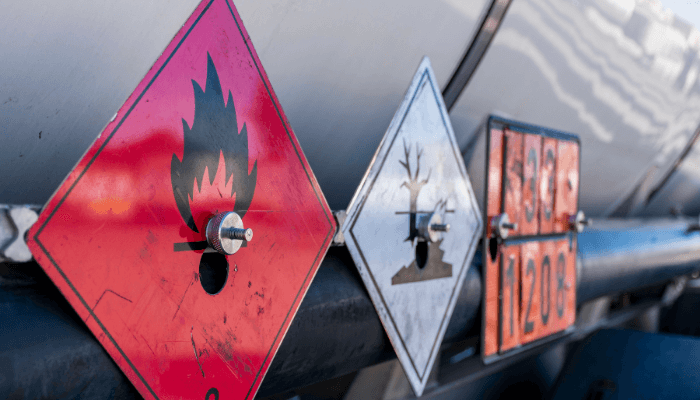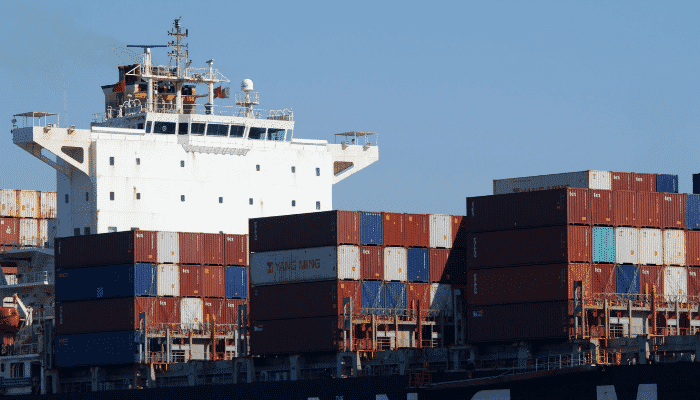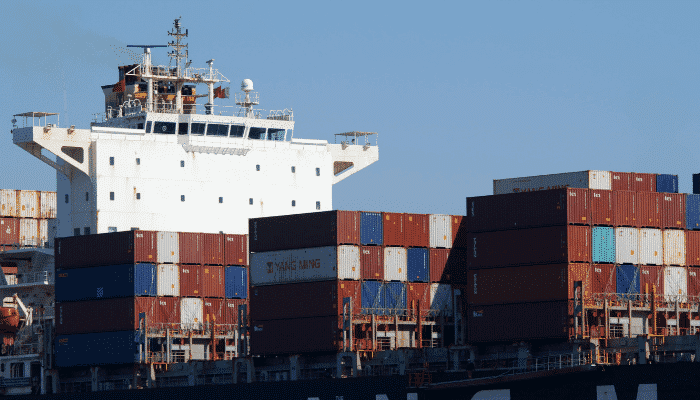
[ad_1]
The shipping disaster off the coast of Colombo, Sri Lanka in May 2021, still haunts the world. Thousands of tons of acids, chemicals, and plastics onboard the MV X-Press Pearl went up in flames releasing noxious, dense smoke into the atmosphere.
One of the worst marine ecological disasters to happen in recent times, environmental experts have termed it a ‘catastrophe to the planet’. It has damaged the ecosystem of the surrounding areas considerably while other damages are yet to be ascertained.
One critical question that this tragedy raises is whether this monumental disaster could have been averted? Were the goods onboard declared correctly?
Quite obviously, the goods on board the MV X-Press Pearl came under the ‘dangerous’ category. Was the packaging done correctly?
The ongoing investigation into the matter is expected to reveal the bitter truths.
Dangerous Goods Declaration (DGD)
What is a Dangerous Goods Declaration?
It is a declaration given by the party that organizes the transportation of dangerous goods by sea to the carrier. It shows the list of goods that come under the dangerous goods category and states the special packaging, identification marks, and labels on them.
The DGD is an undertaking that all applicable national and international laws concerning the transportation of dangerous goods have been followed.
The party issuing the Dangerous Goods Declaration could be the consignor or his appointed agent such as a freight forwarder or any other responsible party authorized to issue and sign this certificate on the consignor’s behalf. For brevity, we will refer to this party as ‘shipper’ here.

Dangerous Goods
Dangerous goods are those that are corrosive, combustible, radioactive, poisonous or polluting. In other words, anything that compromises the safety of the crew and the vessel transporting it comes under the list of dangerous goods.
Also known as hazardous goods, these are listed in the various MARPOL annexes. This list includes certain oils, chemicals, gases, nuclear fuels, radioactive wastes, etc.
The International Maritime Dangerous Goods (IMDG) Code
The IMDG Code is a code adopted by the International Maritime Organization (IMO) that covers all aspects of the packing, labelling, storage, and safety of dangerous goods while they are in the process of being transported.
The IMDG Code is seen as an extension of Chapter VII of the Convention for Safety of Life at Seas (SOLAS).
It is a part of the provision of the Convention for Prevention of Marine Pollution (MARPOL). The MARPOL bans carriage of packaged harmful substances that are on its list. These are substances that may cause marine pollution in the case of an accident.
The IMDG Code was initially set up as a group of recommendations in 1965 covering packaged dangerous goods for transport. Its main aim was to reduce accidents and to prevent environmental pollution.
Later, in 2002, it was adopted by the IMO as a Code under the SOLAS Convention. However, there are still several points in the IMDG Code that remain as recommendations. Changes or amendments are usually made to the Code every two years by the IMO upon receiving recommendations from its members or the United Nations.
At present, the IMDG Code covers all items that are transported. It describes in detail the packing to be followed for each item, their container transport, storage, segregation, and stowage.

Types of Dangerous Goods
The IMDG has classified dangerous goods into 9 classes as follows:
Class 1 Explosives
Class 2 Gases that are compressed, liquefied or dissolved under pressure
Class 3 Flammable liquids
Class 4 Flammable solids that may be spontaneously combustible or those which emit flammable gas
Class 5 Oxidizing agents or organic peroxides
Class 6 Toxic or infectious materials
Class 7 Radioactive materials
Class 8 Corrosive materials
Class 9 Other dangerous and non-classified materials
Process of Dangerous Goods Declaration
The acceptance, stowage, and transport of dangerous goods by a carrier is purely based on the information provided to it by the shipper. This fact is also recognized and emphasized by the IMDG Code. Therefore, it is imperative that the shipper furnishes the correct information to the carrier while booking cargo.
On their part, it is up to the carrier to understand the DGD correctly and plan the stowage and transport accordingly.
Initially, a list of the dangerous goods to be shipped is given by the shipper to the carrier for acceptance. This list is called the Dangerous Goods Request (DGR) or the Dangerous Goods Application.
The DGR is normally submitted along with the Material Safety Data Sheet (MSDS). The MSDS contains detailed information on the goods listed in the DGR.
Besides the information on the goods, the Material Safety Data Sheet lists the safety measure to be taken during transport of the goods, steps and first-aid procedures to follow in the event of an accident, the Personal Protective Equipment (PPE) to be used, handling of reactions or spillage, etc.
Once accepted by the carrier, the shipper packs these goods and prepares the Dangerous Goods Declaration that is accompanied by the labels of the dangerous goods that are to be transported. The signed Dangerous Goods Declaration is given to the carrier who will then plan the stowage accordingly.
The shipper as well as the carrier have to ensure that the DGR and the DGD match. The shipper should ensure that the goods that are handed over to the carrier should be exactly as mentioned in the DGD.
As we can see here, the DGR, the MSDS, and the DGD are closely related and usually form a set called the Dangerous Goods documents.

Contents of a Dangerous Goods Declaration
The main contents of a Dangerous Goods Declaration are as follows:
- Shipper name and address
- Consignee name and address
- Vessel name
- Vessel Voyage number
- Container number
- Name and description of each dangerous good
- The technical name of each dangerous good
- Quantity
- UN number (United Nations number)
- Hazard Class
- Packaging group – type and make
Misdeclaration of DGD
Misdeclaration or failure to declare certain dangerous goods is a serious offence. Incorrect or incomplete Dangerous Goods Declarations can lead to accidents that may cost human lives and loss to cargo or equipment. It may be an accidental omission but some shippers do this on purpose to avoid certain charges or to transport banned substances.
These days, customs and port authorities, as well as shipping lines, impose heavy fines on shippers for misdeclaration of dangerous goods or attempting to transport them without declaring.
You might also like to read:
- A Classification of Dangerous Goods
- How to Get Dangerous Cargo Endorsement Certificate?
- Required Documentation For Shipping: Complete List
Disclaimer: The authors’ views expressed in this article do not necessarily reflect the views of Marine Insight. Data and charts, if used, in the article have been sourced from available information and have not been authenticated by any statutory authority. The author and Marine Insight do not claim it to be accurate nor accept any responsibility for the same. The views constitute only the opinions and do not constitute any guidelines or recommendations on any course of action to be followed by the reader.
What Is Dangerous Goods Declaration in Shipping? appeared first on Marine Insight – The Maritime Industry Guide
[ad_2]
This article has been posted as is from Source